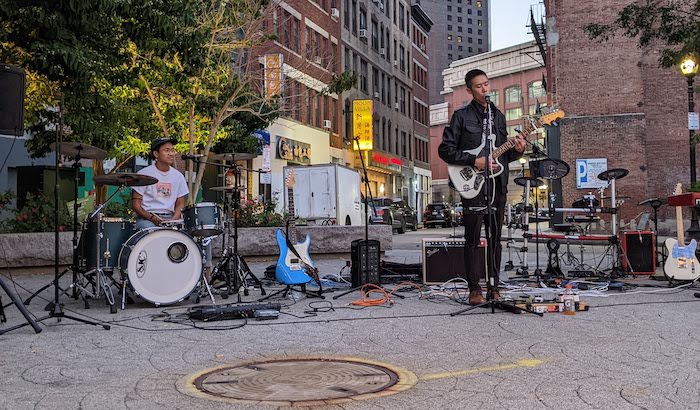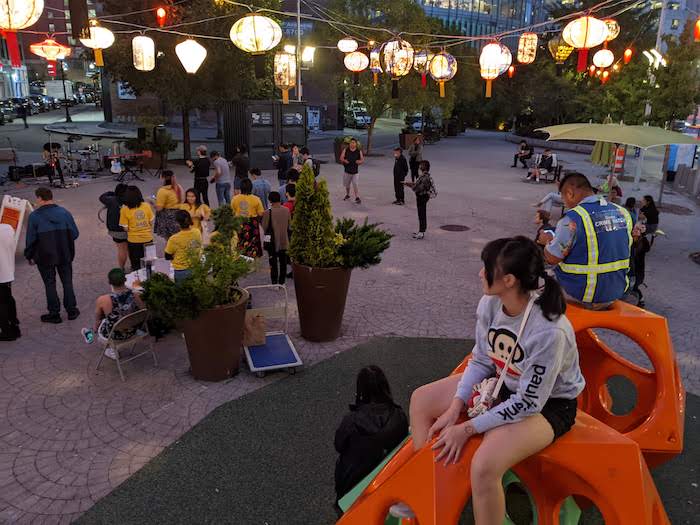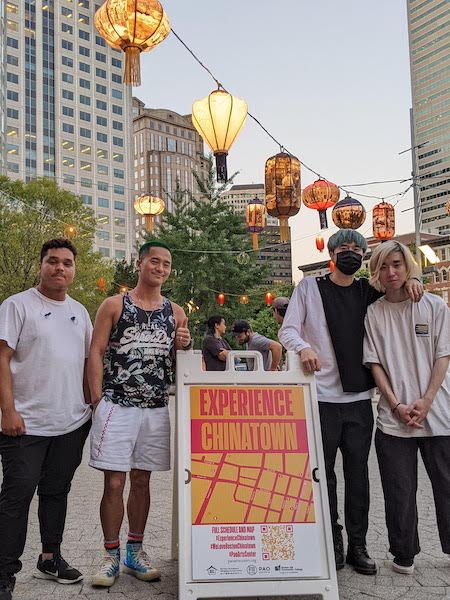
“Servicing the community in a way that brings arts and culture to the forefront.”
Celebrating five years of Pao Arts Center, this year’s Experience Chinatown event earlier this month was the organization’s biggest to date, with more performances and artists on hand to support the local community than ever before. Sophia Chen, the communications and development manager at the Pao Arts Center, said the mission was the same one they pursue day to day—to demonstrate how much the neighborhood has to offer, and focus on cultivating that artistic and cultural development.
“[People used to say] that Chinatown is no more than restaurants, no more than laborers, no more than statistics, no more than consumers,” Chen said. “So having social service agencies come up to respond to that type of reputation, unfounded reputations, this is something that Chinatown in Boston has been doing again and again, and Pao is a part of that history. There’s so much more to do.”

Beyond Chinatown, the Pao Arts Center strives to be a creative hub for AAPI artists in New England. It was established out of money set aside by Chinatown developers; the community was granted funding to choose what they wanted to do with it, and residents chose an arts center. Ashley Yung, the theater and performance program manager at the Pao Arts Center, explained that they are “servicing the community in a way that brings arts and culture to the forefront.”
For the Experience Chinatown event, various artists from all around the Greater Boston area came to Chinatown to paint murals on the windows of restaurants. Pao Arts provided the prompt: “What makes a community special?”
One mural artist, Maria Fong, designed a sticker mural inspired by Dumpling Cafe titled “Intergenerational Persistence,” displaying a flowing piece of fabric that connects a person’s hands on a sewing machine to a young child eating xiao long bao.

“It’s about organized immigrant women in the garment industry and they were really instrumental in Boston Chinatown’s activist history, they fostered worker solidarity and mobilized people around a lot of community issues,” Fong said.
Yung explained the importance of the 2022 Experience Chinatown event specifically: “At the core it’s a celebration of our community, it emphasizes the importance of arts for community well-being.”
Chen added, explaining the event as “celebrating all of the past five years so we can all spend time appreciating this creative process and these creative relationships.”
Noting the performances, from Cantonese pop to martial arts and local AAPI singers and songwriters, Yung added, “The goal of the performance program is to bring two new and old voices into a stage.”
“I hope that there are more multigenerational connections in the Asian community,” said Maddie Lam, a singer-songwriter who performed at the event. “It’s really beautiful to have seen my elders do this dance before I went on as a reminder that in our capitalistic society community is so important, that this myth that we made it by ourselves, that’s not actually true.”
Chen emphasized the activism at the core of arts and culture, specifically in Chinatown. “It’s really essential for people to be able to develop their voices for themselves for expressing to other people and that is the way that communities can work together to communicate with each other to fight for rights, fight for inclusion.”
Karenna Umscheid is a journalist at Emerson College, focused on arts and culture reporting and film criticism. On campus, she's the Editor-in-Chief of WECB's Milk Crate, a music publication, and a writer and editor for Latent Images Magazine. Off-campus, her writing can also be seen in the Boston Hassle. In her free time, she enjoys watching horror movies, running, and perusing local bookstores.

